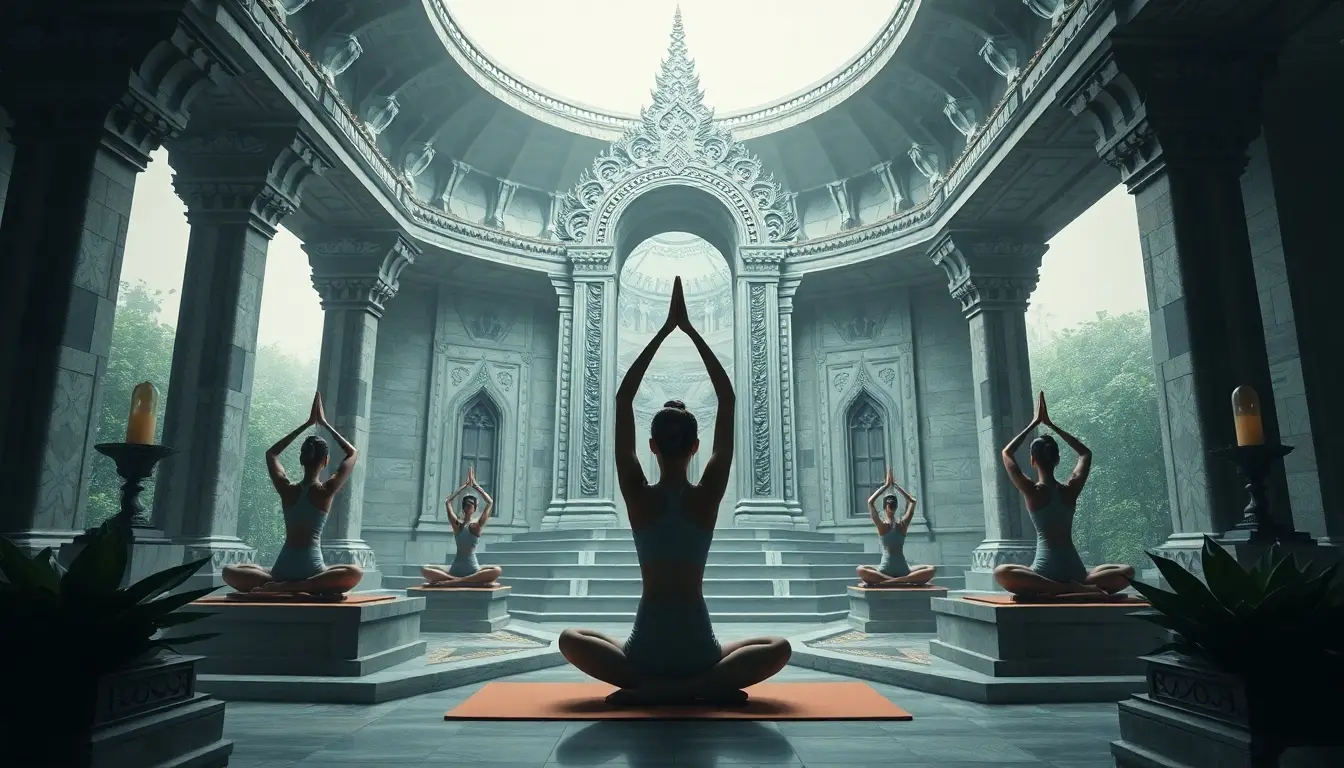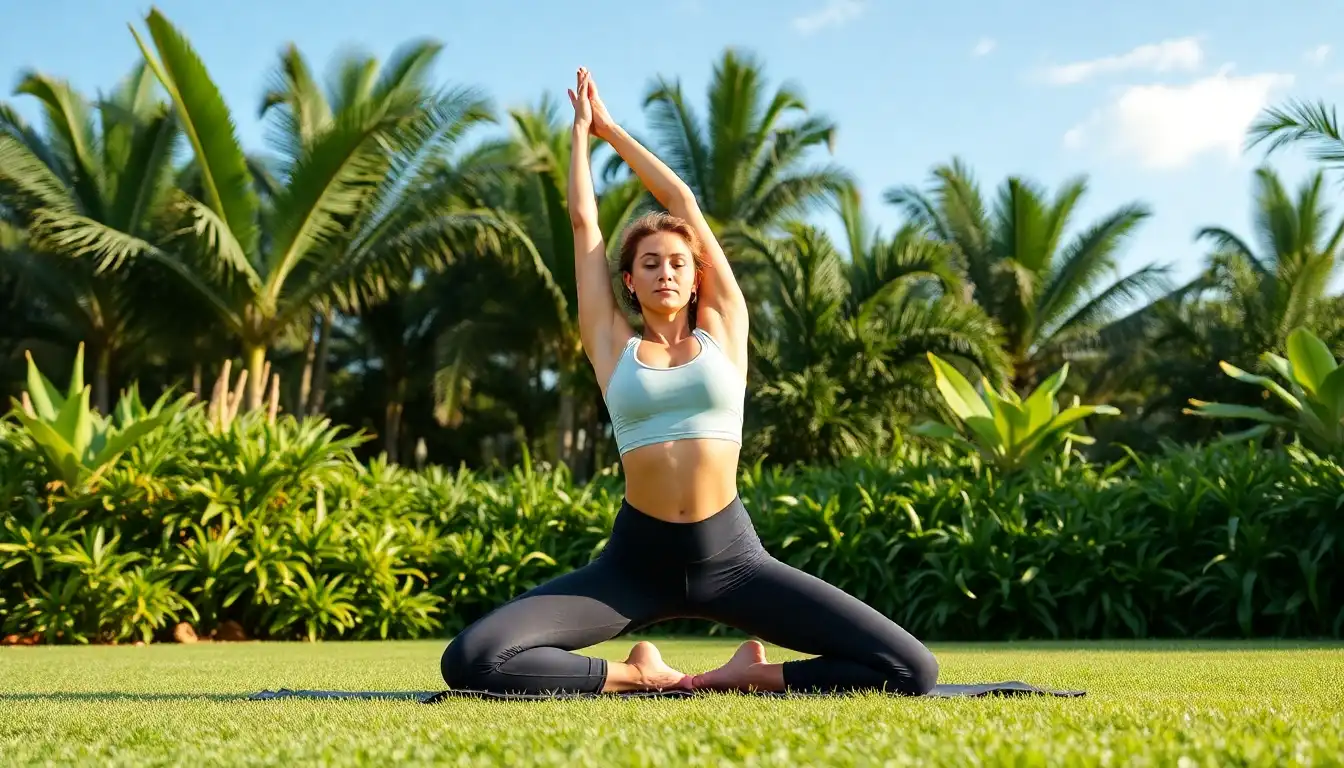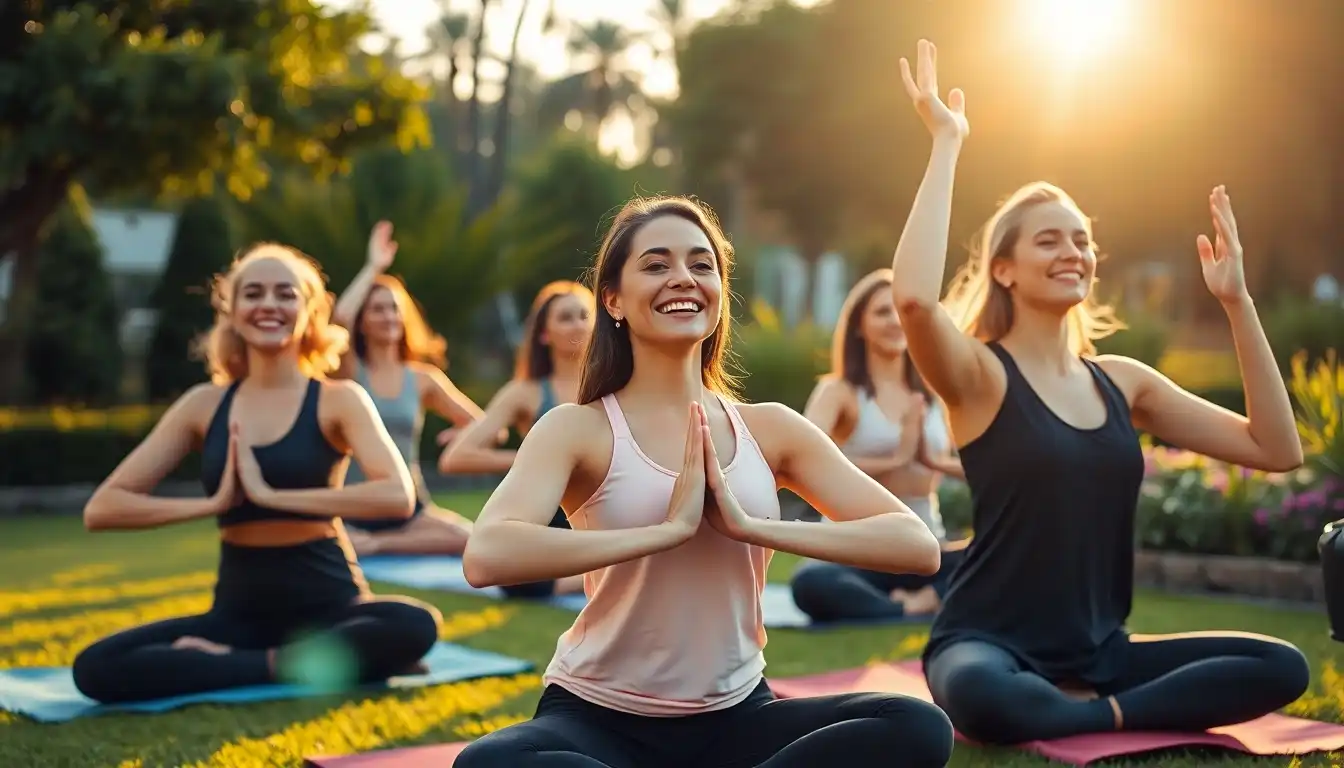Table of Contents
ToggleYoga and Flexibility are intertwined aspects of practice that foster a deeper connection within oneself and enhance physical capabilities. In this exploration, we will navigate through the essential relationship between these two elements, emphasizing their significance for practitioners of all levels.
Understanding Yoga and Flexibility
Yoga and Flexibility are closely linked, as flexibility is often a key component of many yoga poses or asanas. When practitioners engage in yoga, they not only work on stretching their muscles but also seek to improve their overall range of motion. This is crucial for maintaining physical health and achieving optimal performance in daily activities.
Proper alignment in yoga poses requires a certain level of flexibility, allowing for better posture and reduced risk of injury. Furthermore, enhanced flexibility can serve as a foundation for exploring more advanced yoga positions, making the practice more fulfilling and rewarding.
- Flexibility is critical for achieving various yoga postures.
- It contributes to improved muscle strength and balance.
- Practicing yoga helps attain a greater range of motion.
The Relationship Between Yoga and Flexibility
The relationship between yoga and flexibility extends beyond physical capabilities. Practicing yoga encourages a holistic approach to flexibility, encompassing not only the physical body but also promoting mental and emotional openness. This integrative aspect often leads to a more comprehensive sense of well-being.
As practitioners consistently engage in yoga, they begin to notice shifts in their flexibility, which can boost self-confidence and increase motivation. This positive feedback loop encourages individuals to explore new poses and deepen their practice, further enhancing their flexibility and connection to yoga.
- Emotional flexibility is nurtured through mindful yoga practices.
- The mental component reinforces physical practice.
- Self-awareness increases as flexibility improves.

Incorporating Flexibility into Your Yoga Practice
Incorporating flexibility into your Yoga practice is vital for maximizing the experience and achieving a balanced body and mind. This process involves understanding your current level of flexibility and gradually working toward improvement through attentive practice.
Starting with foundational poses can effectively set the stage for enhancing overall flexibility. As you become more familiar with your own body and its limits, you can begin to explore deeper stretches and more complex asanas, making progress at your own pace.
- Begin with stretches for the major muscle groups.
- Utilize props to support and deepen your practice.
- Regularly practice a variety of poses to target specific areas of flexibility.
The Importance of Patience in Flexibility Training
Patience is essential when developing both yoga and flexibility. Progress may seem slow at times, but consistency is key. It’s important to listen to your body and respect its limitations while encouraging gentle stretching and growth.
Mindful practice allows practitioners to observe how their body’s flexibility evolves over time. Recognizing small advancements can foster an encouraging environment, reinforcing commitment to yoga and flexibility training.
- Set realistic goals to track your progress.
- Celebrate improvements, no matter how small.
- Practice self-compassion; flexibility takes time to develop.

Exploring the benefits of yoga for improving flexibility.
Unlocking the Benefits of Yoga and Flexibility
Yoga and flexibility go hand in hand, offering a multitude of benefits that enhance overall well-being. Engaging in yoga not only promotes physical flexibility but also fosters mental elasticity, which is essential for adapting to life’s challenges. This holistic connection creates a sense of balance and harmony within the body and mind.
Beyond the physical realm, the benefits of practicing yoga for flexibility transcend mere stretching. Each pose invites introspection and mental clarity, allowing practitioners to delve deeper into their personal growth. Such an experience encourages mindfulness, fostering healthier lifestyle choices.
- Increases range of motion
- Enhances overall physical performance
- Reduces risk of injuries
- Improves posture and alignment
- Promotes relaxation and stress relief
Physical Benefits of Yoga and Flexibility
The physical benefits derived from yoga practice are profound. Regularly practicing yoga enhances muscle flexibility, which is vital for performing daily activities with ease. As muscles elongate, joint health improves, reducing the likelihood of discomfort and stiffness prevalent in sedentary lifestyles.
Implementing various asanas nurtures a body’s resilience, making it more capable of handling strains and stresses. This increased flexibility allows individuals to experience enhanced physical performance in sports or other physical activities, providing them with a competitive edge while reducing fatigue.
Moreover, the disciplined practice of yoga instills a sense of body awareness. This mindfulness influences movement, helping individuals adopt more beneficial postures throughout their day, whether sitting at a desk or engaging in physical activity.
Emotional and Psychological Advantages of Yoga and Flexibility
The relationship between yoga and flexibility extends beyond the physical aspect; it significantly impacts emotional well-being. By fostering flexibility, yoga allows individuals to cultivate an open mind that embraces change—an invaluable trait in today’s fast-paced world.
Practicing yoga encourages a connection between body and mind that enhances emotional regulation. Improved flexibility results in a greater sense of self-acceptance and self-awareness, which contributes to heightened levels of empathy and compassion towards oneself and others.
- Improves mood and emotional stability
- Enhances resilience to stress
- Fosters a sense of community and connectedness
- Encourages mindfulness and present living
- Facilitates personal growth and self-discovery
Long-term Health Benefits of Yoga and Flexibility
Adopting a consistent yoga practice yields long-term health benefits related to flexibility. Improved flexibility significantly reduces the risk of developing chronic ailments, ensuring a healthier life as one ages. As such, maintaining flexibility through yoga becomes crucial for longevity and quality of life.
Additionally, yoga acts as a preventative measure against injury, particularly as one advances in age. The body becomes more agile, which is essential for maintaining an active lifestyle. This adaptability allows individuals to enjoy outdoor activities, travel, and engage in new experiences.
The practice also encourages better circulation and digestion, promoting an overall sense of vitality and wellness. Incorporating yoga into a regular routine can serve as a key foundation for a holistic approach to health, emphasizing the importance of the mind-body connection.

Explore how Yoga and Flexibility work together to enhance your life.
Social and Community Benefits of Yoga and Flexibility
Engaging in yoga practice often fosters a sense of community, which enhances the social aspect of flexibility. Joining group classes enables individuals to connect with like-minded people, creating an environment of support and motivation. The shared journey nurtures friendships that become transformational on both personal and collective levels.
Such social interactions not only encourage a commitment to practice but also create accountability. By cultivating relationships within a yoga community, individuals feel inspired to prioritize their health and well-being, further embedding flexibility into their lives.
- Builds a supportive social network
- Encourages shared experiences and growth
- Promotes accountability and motivation
- Enhances communication and interpersonal skills
- Reduces feelings of isolation
Incorporating Yoga and Flexibility into Everyday Life
Integrating yoga into daily routines can significantly enhance overall flexibility and wellness. As individuals practice, they reap the rewards of physical, emotional, and social benefits consistently. This holistic approach emphasizes the importance of incorporating yoga into one’s lifestyle as a source of empowerment.
By making time for yoga, individuals also strengthen their mental resilience, which is essential for navigating life’s complexities. This flexible mindset nurtures creativity and problem-solving abilities, crucial traits for personal and professional development.
Overall, the connection between yoga and flexibility extends beyond mere physical attributes—it’s a comprehensive approach towards achieving a fulfilling and balanced life. For more insights and products to enhance your journey, explore options at Relhum, or delve deeper into our blog for additional resources.

Caption: Enhance your practice with yoga to improve flexibility and overall well-being.
Exploring Yoga and Flexibility
Yoga and flexibility go hand in hand, as the practice of yoga aims to enhance one’s physical flexibility. Engaging in various yoga poses stretches different muscle groups, promoting a more supple body. This increased flexibility can lead to improved posture, enhanced performance in physical activities, and a greater range of motion in daily movements.
Furthermore, the integration of breath work in yoga, known as pranayama, complements the physical aspects of flexibility. Each pose encourages deeper breathing, which helps release tension and increases blood flow to muscles, allowing them to stretch and relax more effectively. This harmonious relationship between movement and breath epitomizes the essence of yoga.
Adopting a consistent yoga practice can lead to remarkable changes in flexibility over time. For those looking to increase their flexibility through yoga, patience and persistence are essential. Progress may vary, but the journey of improvement is just as important as the end goal.
Five Tips for Enhancing Flexibility through Yoga
Improving flexibility through yoga requires dedication, consistency, and the right approach. Here are five practical tips to help you on your journey in yoga and flexibility.
- Start with Warm-ups: Proper warm-ups prepare your body for stretching, ensuring that muscles are ready and pliable for deeper stretches.
- Consistent Practice: Aim for a regular yoga routine to gradually and sustainably increase your flexibility over time.
- Focus on Breath: Use your breath to deepen stretches; inhaling and exhaling mindfully helps release tension from muscles.
- Incorporate Various Asanas: Explore a wide range of asanas that target different muscle groups, ensuring balanced flexibility.
- Stay Mindful: Listen to your body and avoid overextending; respect your limits while gently pushing for improvement.

Enhancing flexibility through yoga is not solely dependent on performing advanced postures. Instead, focus on embracing the foundational aspects of your practice. Each individual’s journey is unique, and recognizing this can cultivate a more fulfilling yoga experience.
The Role of Props in Yoga Flexibility
Incorporating props such as blocks, straps, and bolsters can significantly aid in achieving greater flexibility during your yoga sessions. These tools can help you achieve the proper alignment and support your body in various poses, allowing for deeper stretches without causing strain. Using props effectively opens doors to new flexibility levels.
Props also serve as a great way to ease into challenging poses. For beginners or those with limited mobility, props can bridge the gap, providing the necessary support to hold stretches safely longer. By utilizing these tools, you can foster a more inclusive yoga practice that encourages gradual improvement in flexibility.
Many yoga studios and practice spaces offer a variety of props, which are often available for personal use in classes. Don’t hesitate to explore these resources to enhance your experience and advance your journey toward flexibility in your yoga practice.
Nurturing Flexibility through Mindfulness
The combination of yoga and mindfulness can profoundly influence how your body experiences flexibility. Practicing mindfulness involves being present in your movements and paying attention to your body’s sensations during each pose. This heightened awareness encourages the release of tightness and promotes ease in stretching.
Mindfulness also plays a vital role in setting realistic flexibility goals. Instead of comparing your journey with others, focus on your progress and celebrate small victories along the way. Each gradual improvement fosters motivation, keeping you engaged in your yoga practice.
Incorporating meditation techniques that promote mindfulness further supports your flexibility. Dedicate time before or after your yoga practice for simple breathing exercises or visualization techniques that cultivate a connection between mind and body, fostering a holistic approach to your flexibility journey.
The Importance of Hydration and Nutrition
For optimal flexibility in yoga practice, maintaining proper hydration and nourishing your body with healthy food choices is crucial. Staying hydrated ensures that your muscles remain supple and less prone to injury during stretching activities. Aim to drink water before, during, and after your yoga sessions.
Nutrition also plays a key role in supporting muscle health and flexibility. Consuming a balanced diet rich in fruits, vegetables, whole grains, and healthy fats provides the essential vitamins and minerals needed for muscle recovery and overall functioning. Foods high in omega-3 fatty acids help reduce inflammation, promoting more effective stretching.
Consider combining your yoga and flexibility practice with mindful eating habits. Paying attention to your body’s nutritional needs can foster a profound connection between what you consume and how you feel during your practice, making each session even more rewarding.
Conclusion
Integrating yoga into your routine not only enhances flexibility but enriches overall well-being. Embracing this journey requires patience, dedication, and an open mind. Whether you are a seasoned practitioner or just starting, the opportunities for growth are endless.
Now is the perfect time to deepen your knowledge of yoga and flexibility. Explore various practices, seek guidance, and connect with experts to elevate your journey. For more information, visit our website or check out our shop for resources that can aid your exploration. Join our community today and embark on a transformative path!

Discover the transformative power of Yoga and Flexibility.
Questions About Yoga and Flexibility
What is the relationship between yoga and flexibility?
Yoga promotes flexibility by incorporating various asanas (postures) that stretch and strengthen the muscles. This practice enhances the range of motion in joints and improves overall body alignment, contributing to greater physical and mental well-being.
How often should I practice yoga to improve flexibility?
To see significant improvements in flexibility, it is recommended to practice yoga at least 3 to 5 times a week. Consistency is key, and even short sessions can make a difference over time.
What are some yoga poses that specifically enhance flexibility?
Some effective yoga poses for improving flexibility include Downward Dog, Forward Bend, Pigeon Pose, Butterfly Pose, and Cobra Pose. These asanas target different muscle groups and help gradually increase flexibility.
Can yoga help with muscle tightness and stiffness?
Yes, yoga is excellent for relieving muscle tightness and stiffness. The combination of stretching, breathing techniques, and mindfulness helps to release tension and promote relaxation in both the body and mind.
Is it necessary to be flexible to start practicing yoga?
No, it is not necessary to be flexible to start practicing yoga. Yoga is accessible to everyone, regardless of their current flexibility level. The practice itself helps to improve flexibility over time.
How does breath work (pranayama) contribute to flexibility in yoga?
Controlled breathing practices, or pranayama, help calm the mind and relax the body, which can lead to increased flexibility. Deep, steady breaths enable a deeper stretch by allowing the body to release tension and deepen into poses.
Can yoga and flexibility practices benefit women’s health?
Absolutely! Yoga and flexibility exercises can benefit women’s health by reducing menstrual discomfort, improving pelvic floor strength, and supporting overall balance and alignment. Certain poses also promote hormonal balance and emotional well-being.
What role do mudras play in flexibility during yoga practice?
Mudras, or hand gestures, can enhance the flow of energy within the body during yoga practice. Certain mudras may help focus the mind, improve concentration, and support emotional release, contributing to an overall sense of flexibility both physically and mentally.
How can aromatherapy enhance my yoga and flexibility practice?
Aromatherapy can enhance your yoga practice by creating a calming atmosphere and promoting relaxation. Essential oils like lavender and eucalyptus can reduce physical tension and enhance focus, making it easier to ease into stretches and poses.
What is the best time of day to practice yoga for flexibility?
The best time to practice yoga for flexibility varies by individual, but many find that practicing in the morning helps wake up the body, while evening sessions can help release tension accumulated throughout the day. Choose a time that feels best for you and fits your schedule.


